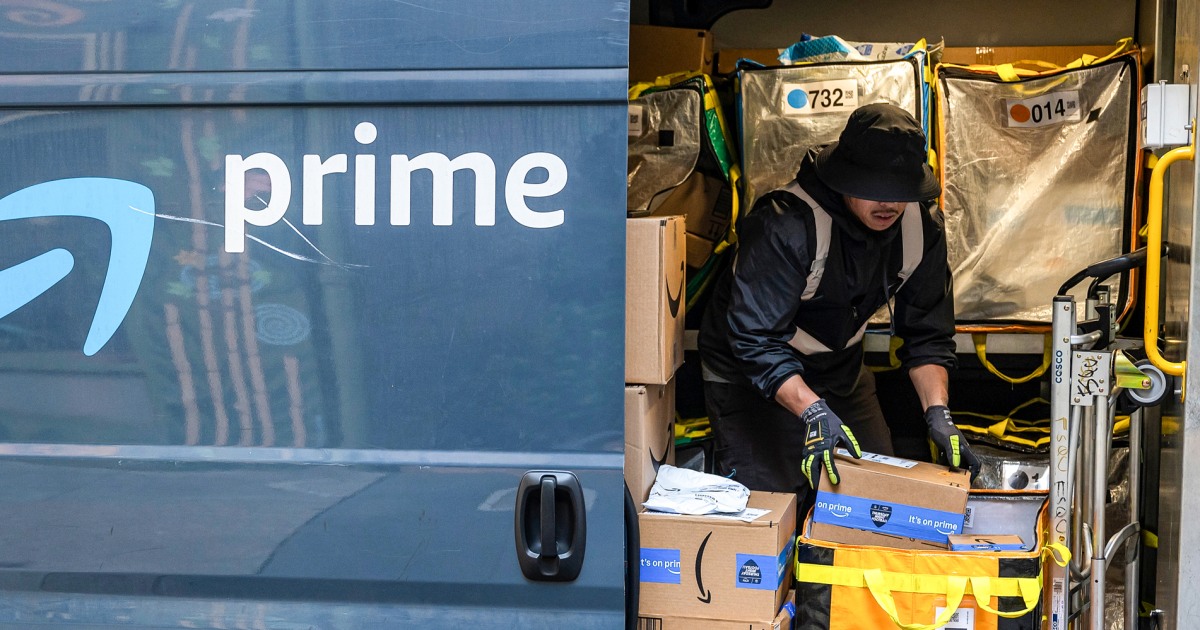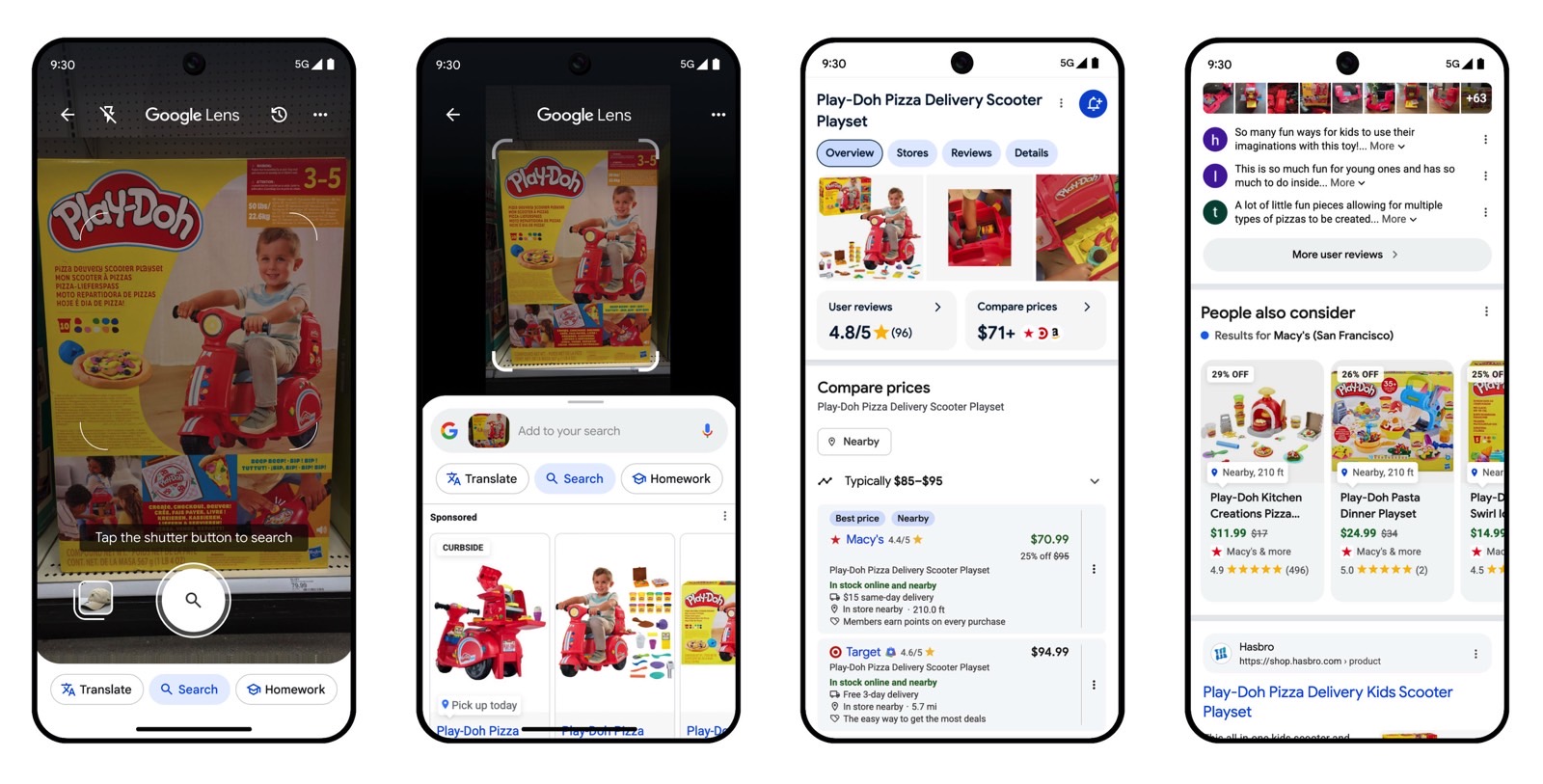Shopping
In the race for holiday shoppers’ dollars, Amazon is setting the pace

Missing Black Friday and Cyber Monday deals might matter less now as retailers pepper bargain hunters with discounts for months heading into the holidays. But planning ahead to take advantage of them is getting harder, and that’s largely thanks to Amazon.
NBC News’ Holiday Price Check is tracking the online prices of five gift items, each in a popular product category, to determine when the best deals hit. Already, it’s clear that Amazon is often setting the pace. Not only does the e-commerce giant most frequently offer the lowest price, but when it holds a sale on a specific item, other major retailers follow suit. What’s more, the flurry of discounts often occurs outside of heavily advertised sales events.
“It’s like a race, it’s a game,” shopping expert Trae Bodge said. Stumbling onto a sale for an item on your shopping list can offer “that satisfaction of a win,” she said. But it’s getting harder to know ahead of time where or when the next one’s coming.
On Nov. 1, Amazon was first to drop the price of Apple’s Airpods Pro 2 to $179.99 from its typical price of $199.99. The next day, Walmart and Best Buy each followed suit by the exact same amount. By Nov. 7, Amazon’s listing had inched up by $10, to 189.99, but Best Buy lowered its price further, to $169.99. The following day, Amazon matched it.
The Seattle-based company has consistently been the lowest-priced retailer for several years, pricing items at an average of 14% lower than its competitors, the e-commerce analytics firm Profitero found in a study released this month. That discounting lead is down two percentage points from last year, hinting that other big rivals are closing in a bit.
Target, for example, has narrowed the online price gap with Amazon in key product categories since last year, Profitero found. Walmart recently expanded its third-party marketplace and has leaned Walmart+, the membership program it launched in 2020 that offers free delivery, looking to catch up with Amazon Prime.
While the price competition is tighter in some of the most popular holiday retail categories — such as toys, fashion and electronics — Amazon still has the edge, with prices averaging between 2% and 9% lower than those of its closest competitors in those areas, such as Walmart and Best Buy, Profitero found.
Online retailers are really recognizing how price sensitive consumers are.
Vivek Pandya, lead digital analyst, adobe
The recent AirPods discounting one-upmanship came just a month after Amazon’s Prime Big Deals Day — during what’s usually a quieter period between that October event and Black Friday in late November. Looking back at the online prices of AirPods Pro 2 around this time last year, NBC News found much the same thing: Amazon put them on sale from mid-October to mid-November in 2023, too.
Janelle Rasey, an Amazon spokesperson, said prices fluctuate to give customers opportunities to save throughout the year. “We’ll always work hard to offer outstanding value across Earth’s largest selection — all while delivering to doorsteps fast,” she said in a statement.
Retailers have pushed in recent years to lengthen the holiday shopping season to keep customers spending even as many try to space out their gift purchases and stay on budget. That trend is continuing in 2024, a year when many consumers have been prioritizing affordability even as price increases have leveled off.
Inflation ticked up slightly to 2.6% in October but remains far below its pandemic-era peak. And while the economy remains sturdy and consumer confidence is rising, widespread cost-of-living frustrations helped propel President-elect Donald Trump back into the White House, NBC News exit polls found.
But while Americans voiced their economic dissatisfactions in the ballot booth, many are still shopping at record rates. Retail sales jumped 0.4% in October, better than analysts had expected. Holiday shoppers this season are now forecasted to spend an average of $902 per person, $25 more than last year, according to the National Retail Federation, an industry trade group.
“Households are starting the season in decent financial shape and are managing the constraints of their paychecks, with growth in wages and salaries still supportive of a steady pace of spending,” NRF chief economist Jack Kleinhenz said in a statement this month.
But for retailers, the race for shoppers’ holiday dollars is increasingly a discounting competition. “Consumers will respond to price value,” Adobe lead digital analyst Vivek Pandya said. “The online retail space is one of the few sectors where they feel like they’re getting strong deals and effective pricing.”
Hunting down those deals isn’t always easy, though.
Amazon’s own display tools can help you determine if you’re getting the lowest price. A company spokesperson said its “Buy Now” button, located below “Add to Cart,” indicates that Amazon offers the lowest price across the board. If another retailer has a lower price, the item is still available for purchase on Amazon, but the “Buy Now” button is not displayed.
If you want to ensure that you’re getting the lowest price at your time of purchase, it’s always worth cross-checking an item on other major retailers’ websites.
Bodge’s key to strategic shopping is to use price comparison tools like Google Shopping and historical price trackers like CamelCamelCamel to catch lesser-known deals. It’s “a way for a consumer to take more control over this dynamic pricing,” she said.
But the never-ending flurry of unannounced discounts is something shoppers may have to get used to.
“Online retailers are really recognizing how price sensitive consumers are, so they’re tapping into their ability to price effectively and competitively,” Pandya said.



:quality(85):upscale()/2024/11/05/844/n/43463692/c676d7c6672a6ef11c6df4.39912456_.jpg)






